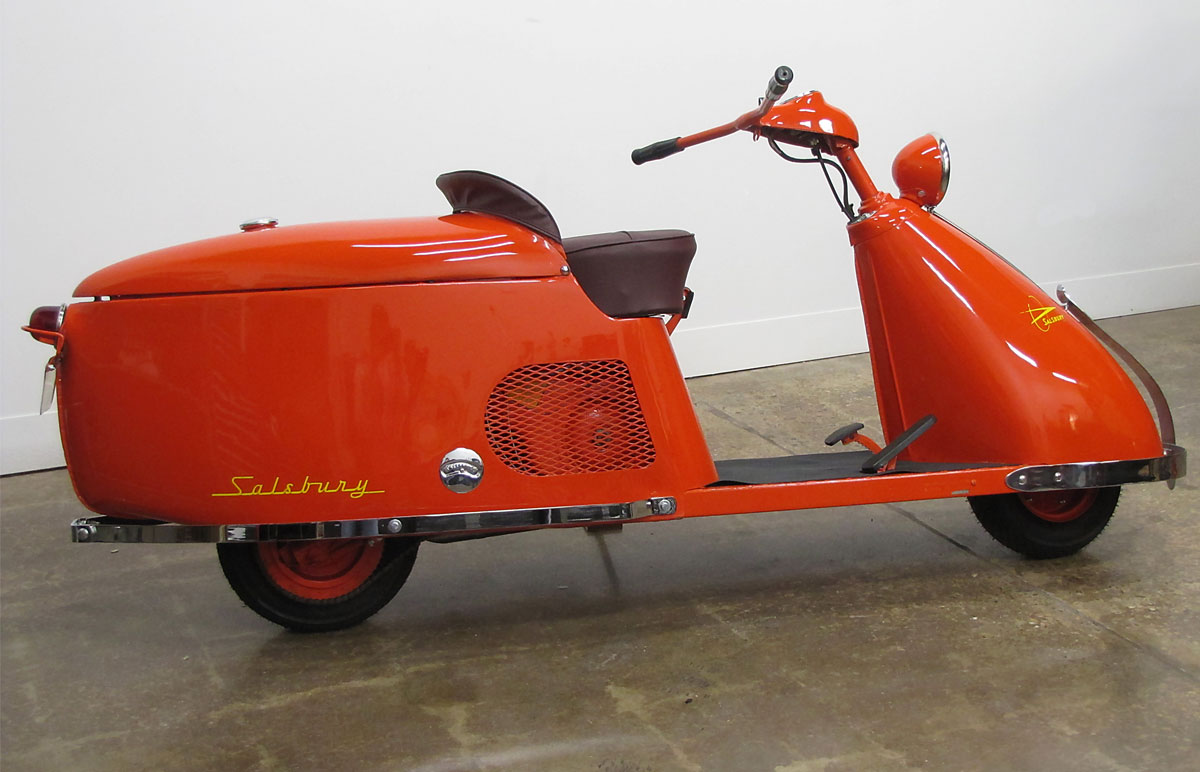
The Salsbury Model 85 is possibly the coolest, most inventive and trend setting of American scooters. It offers great streamlined style, but with its variable speed drive*, remarkable performance as well. The featured Salsbury is a Standard, but a DeLuxe was also produced in small numbers. It featured a more enclosed fairing, recessed headlamp and a clear windscreen, but only one is known to exist today. In a book entitled The Evolution of a Revolution”. Scooters: Red Eyes, Whitewalls and Blue Smoke, author Shattuck states that “Almost every scooter built today uses Salsbury’s basic design.” Most interesting about the Salsbury Model 85 is its Constant Velocity Drive or CVT.
Perhaps similar to a typical women’s bicycle frame design, in strictest terms, a scooter offers a “step through” frame, does not require “throwing a leg over” such as with a typical motorcycle. Way back in the 1930’s E. Foster Salsbury was impressed when he saw Amelia Earhart using a small powered two-wheeler around a California airport. He set about designing and building cheap transportation for post-Depression Americans. His first model, the Salsbury Aero Model Motor Glide was first shown in 1936 and about two dozen were manufactured. They used a friction roller against the rear wheel, which proved an impractical design.
The classic and best known drive line design was rolled out in 1938, and offered “self shifting” on the 50 and 60 Models, later the featured Model 85. Some feel that with this “CVT”, constant velocity transmission, the central placement of the engine, a bit of rider protection, a trunk, step-through mounting and small wheels, Salsbury set the standard for scooter designs of the future. And the streamlined design may have been influenced by Salsbury’s work in wind tunnel testing for the World War II effort. Salsbury also adopted some of the pedal operated controls typical of an automobile thinking potential customers that drove automobiles would have a quicker learning curve. Just step on the pedal and go; engine RPMs move into the power band and then become fairly constant as the CVT automatically “upshifts” for you. Searching “Salsbury YouTube” will turn up numerous operating videos for you.
Less than 1000 Model 85’s were made from 1947-1950. Salsbury engines over time came from several suppliers, and these scooters were assembled in California by the Northrup Aircraft company.
Specifications:
- Engine: Salsbury Four Stroke Single
- Design: Fan-cooled, Side-valve
- Displacement: 320cc’s
- Horsepower:6 Horsepower
- Transmission: CVT Automatic
- Starting: Kick Starter
- Frame: Steel Stock
- Body: Formed Steel
- Seating: Spring Cushion, Solo
- Bumpers: Chrome Plated Spring Steel
- Top Speed….50 MPH
*The CVT design incorporated a tough, wide V-belt, moving pulley sheaves that changed the “gear ratio” automatically as engine speed and resistance increased or decreased. Modern CVTs are oil-bath designs using multi-plate link chains on “sprockets” housed in “transmission” cases.
Leave a Reply
Want to join the discussion?Feel free to contribute!

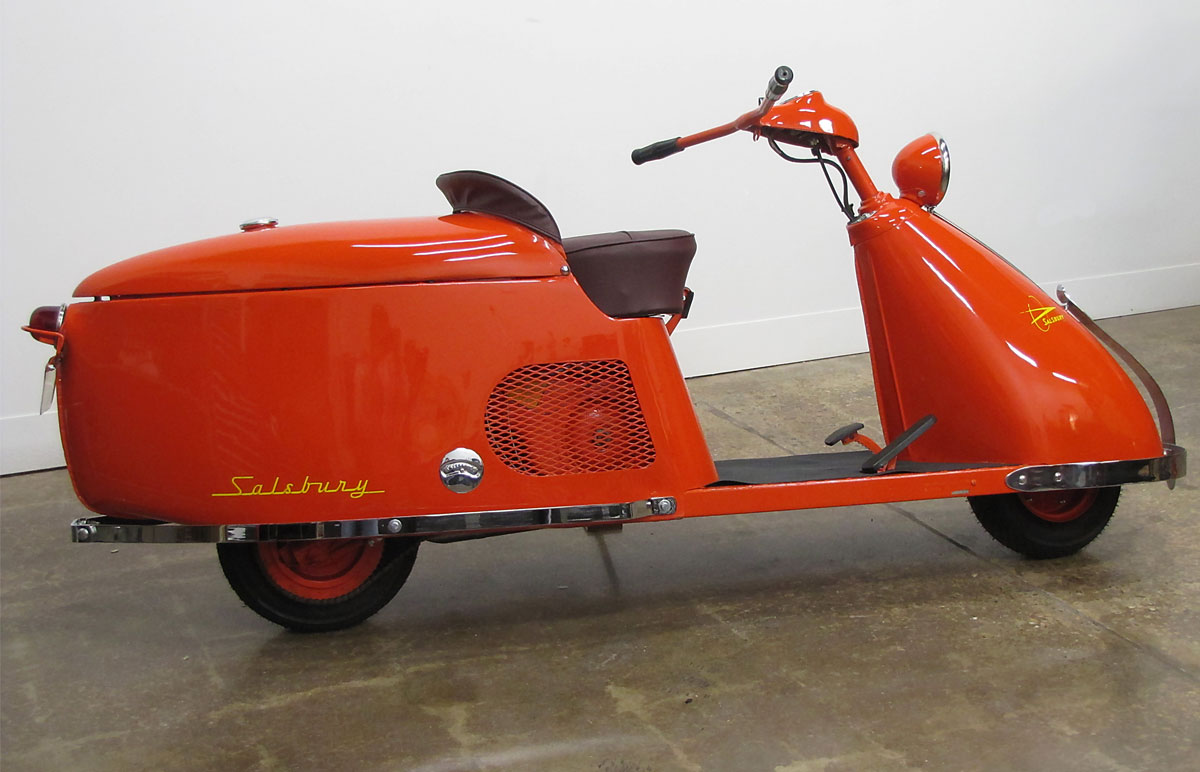
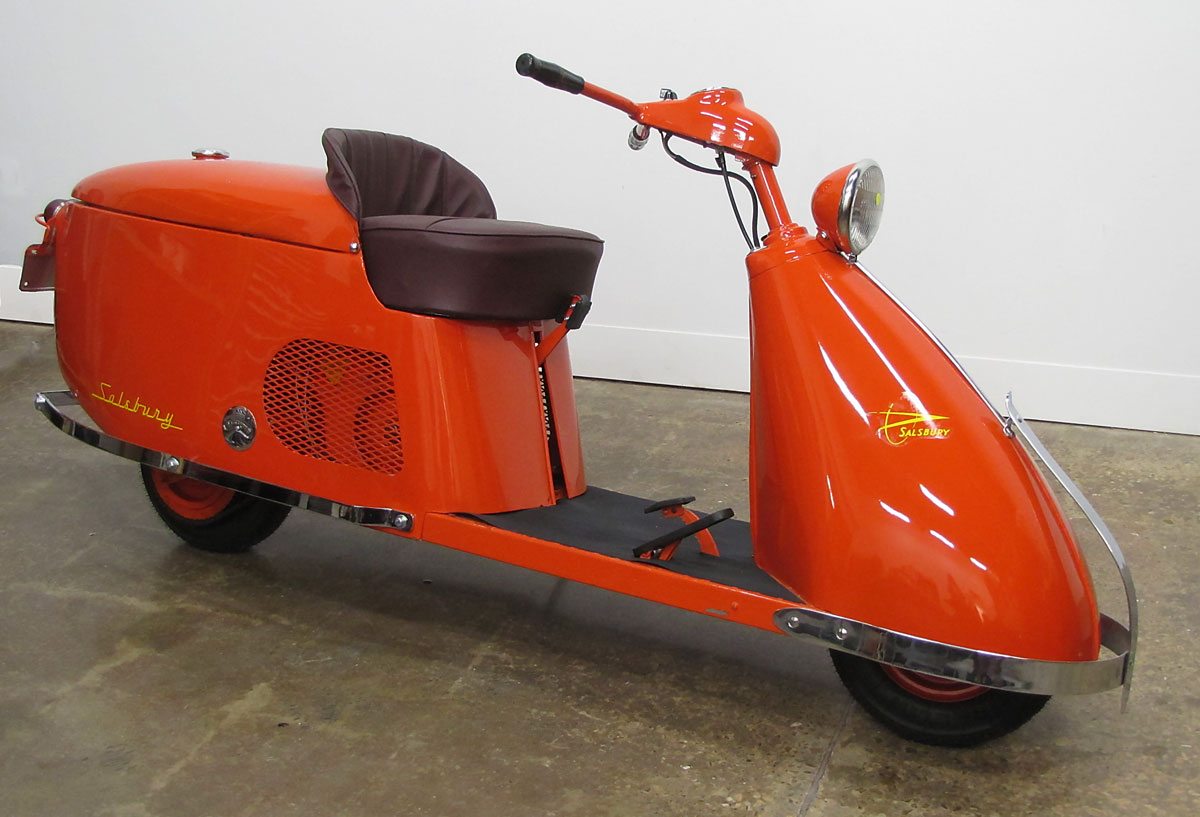
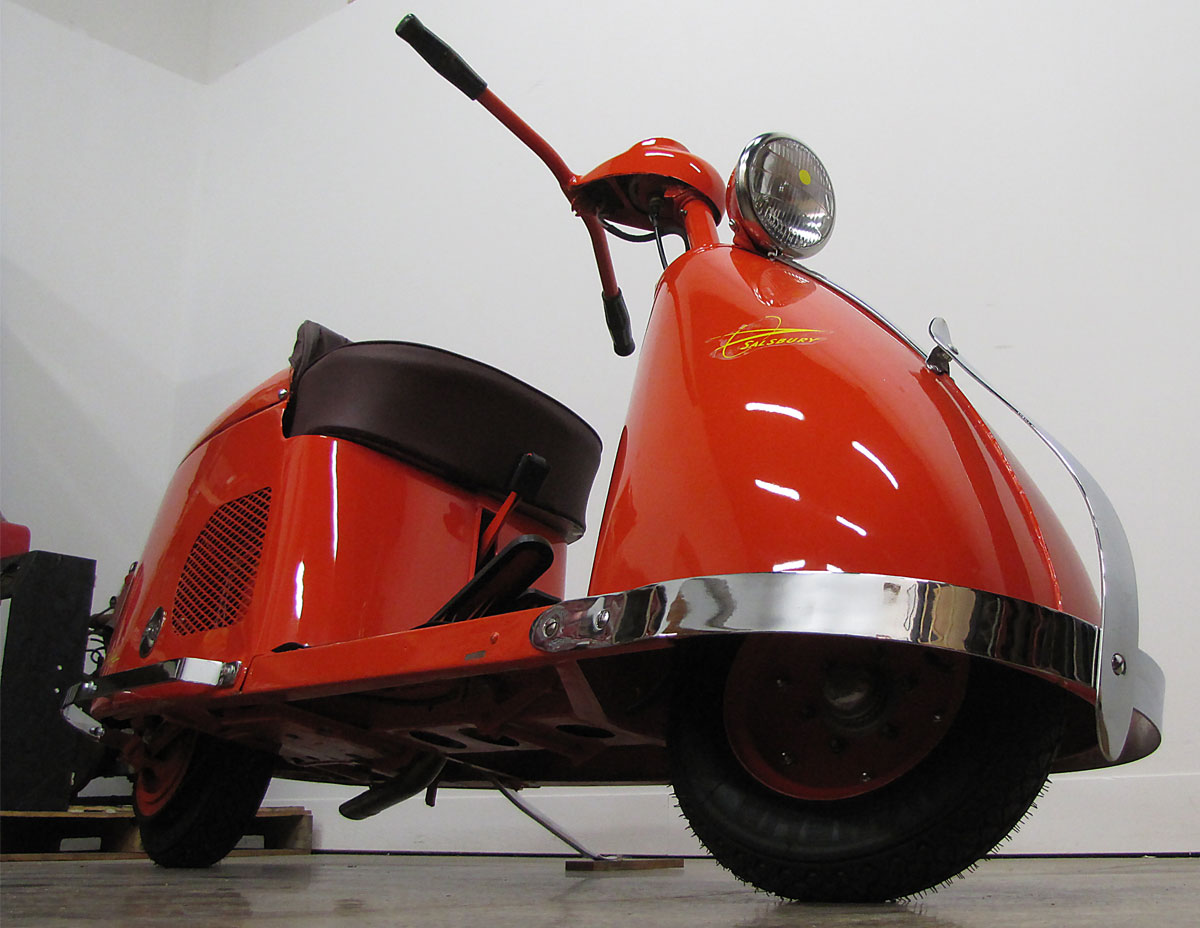
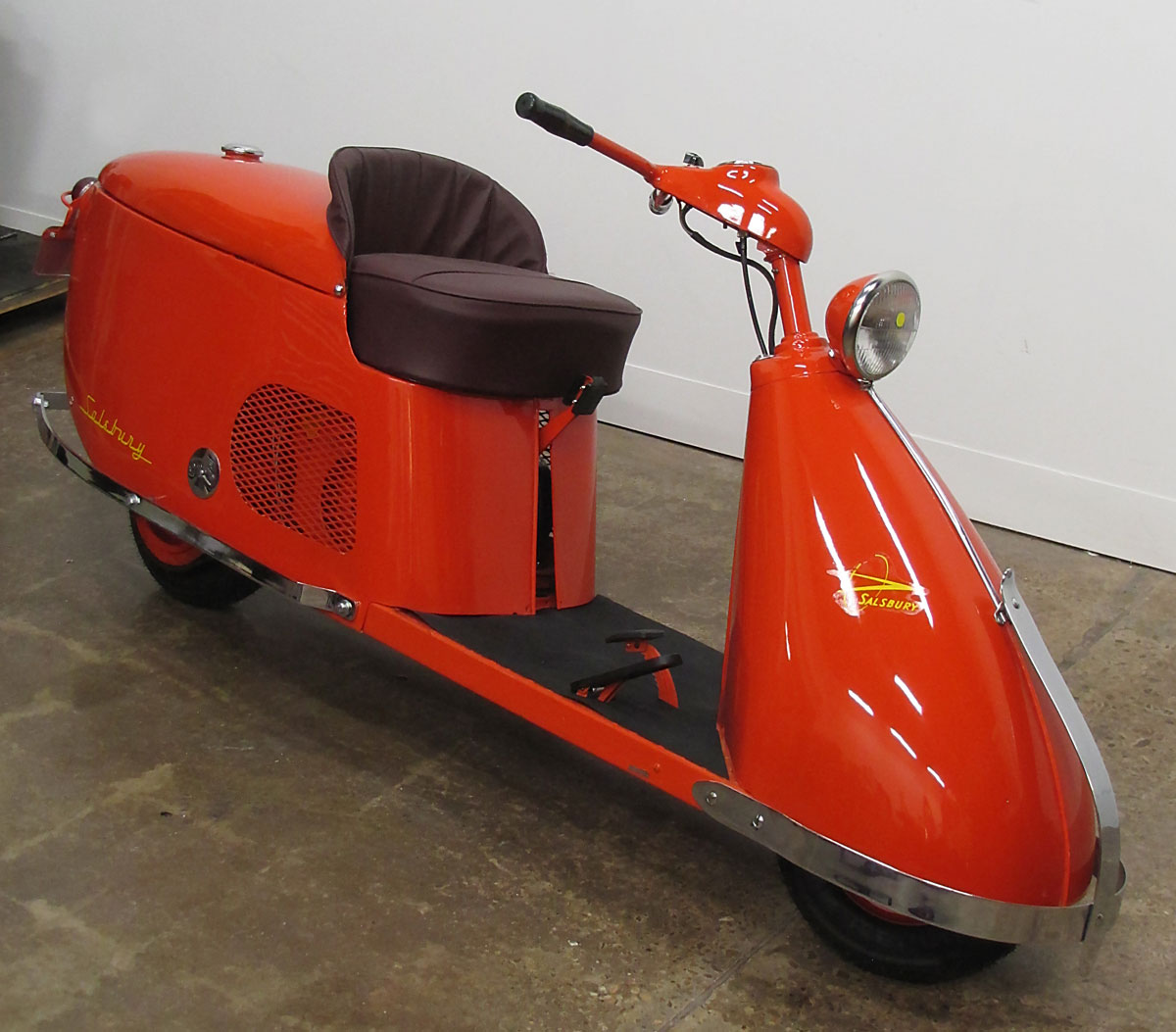
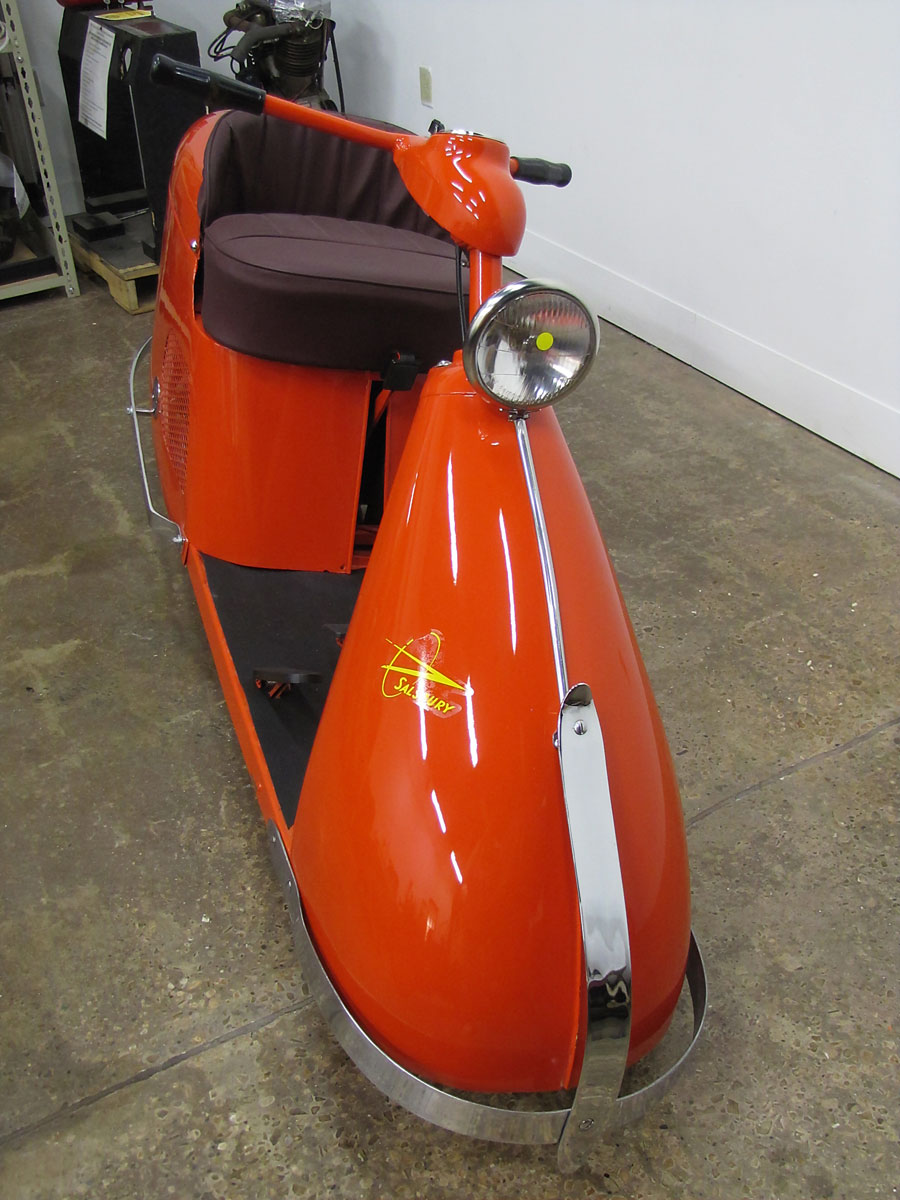
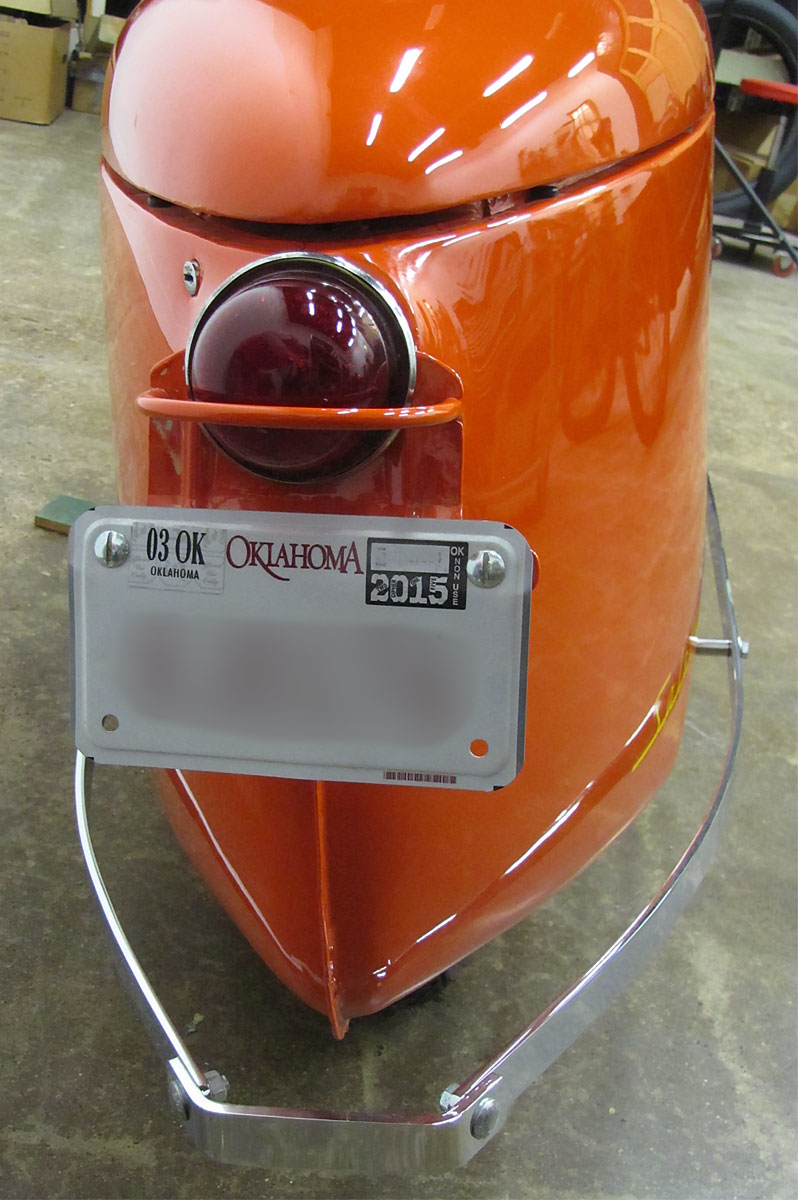
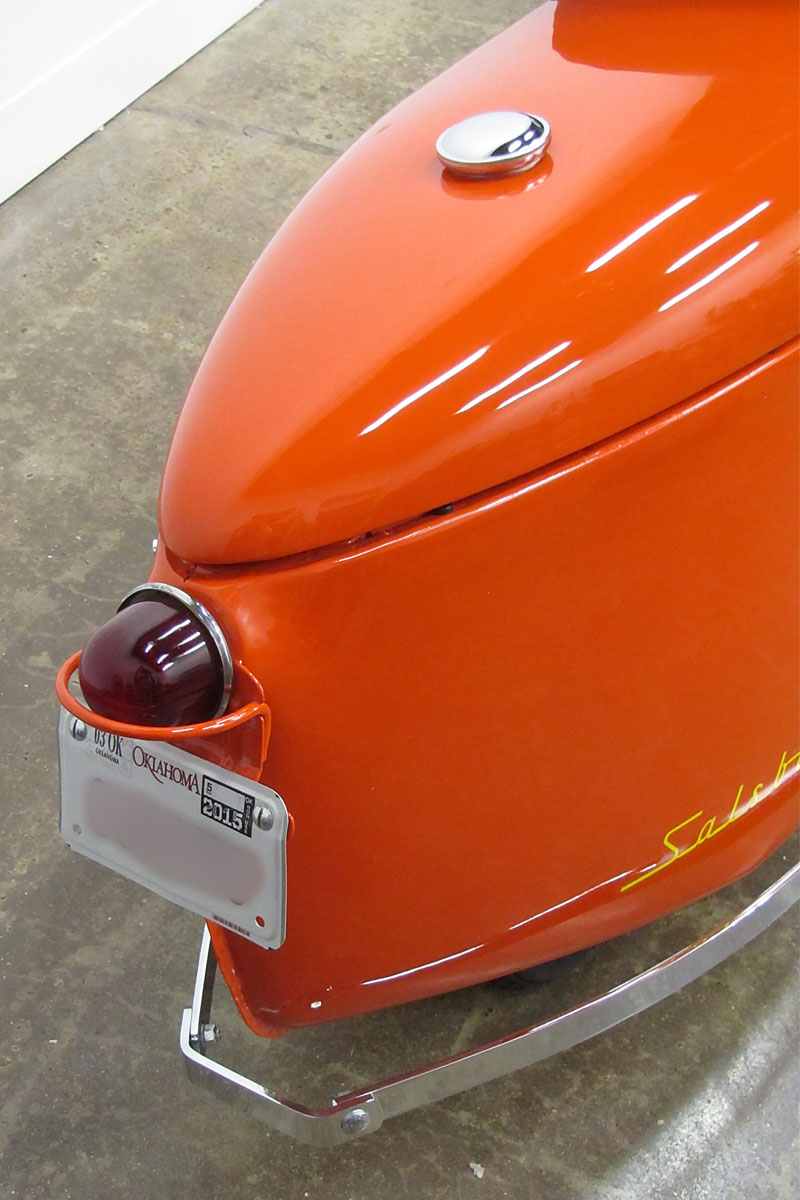
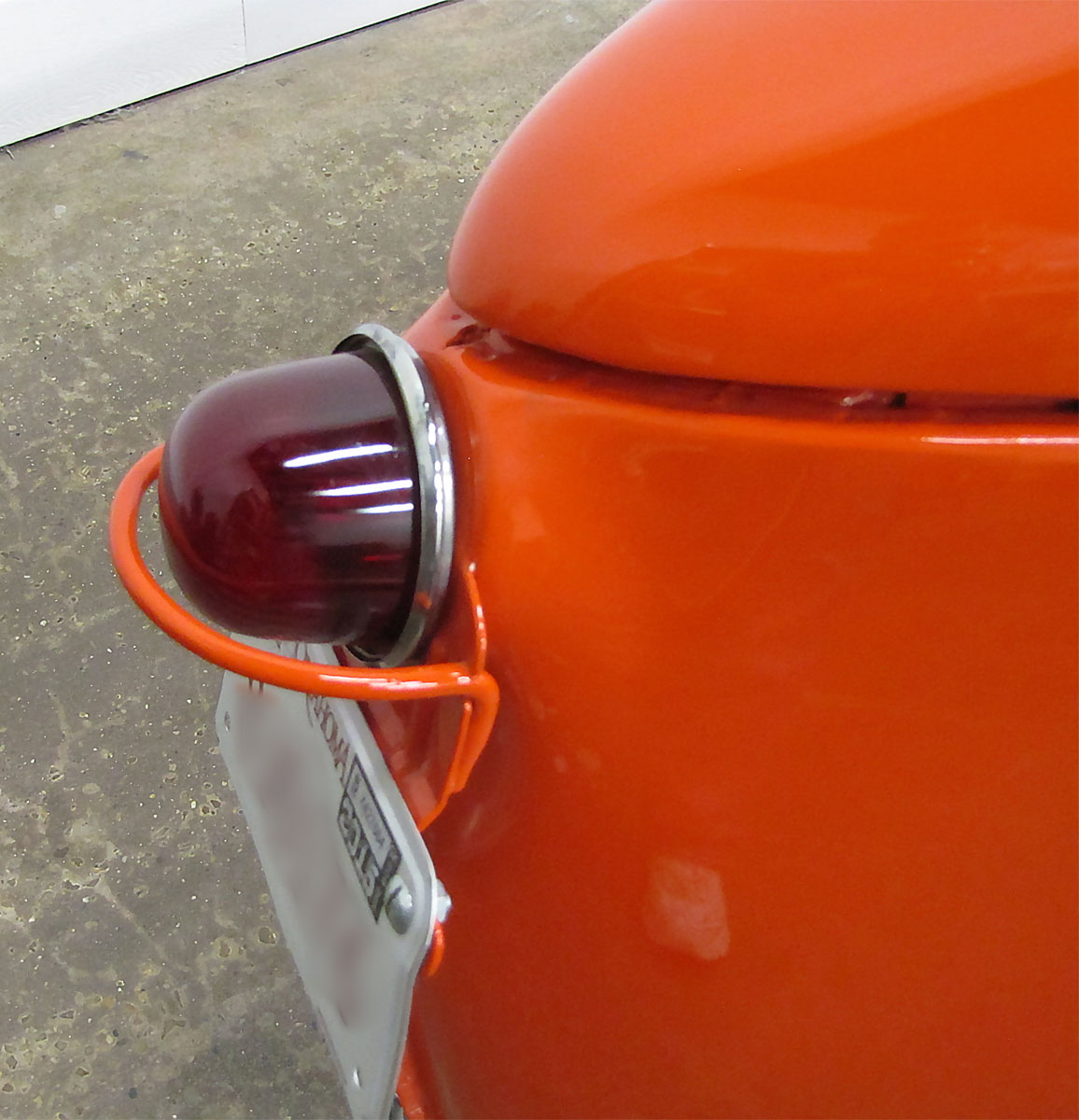
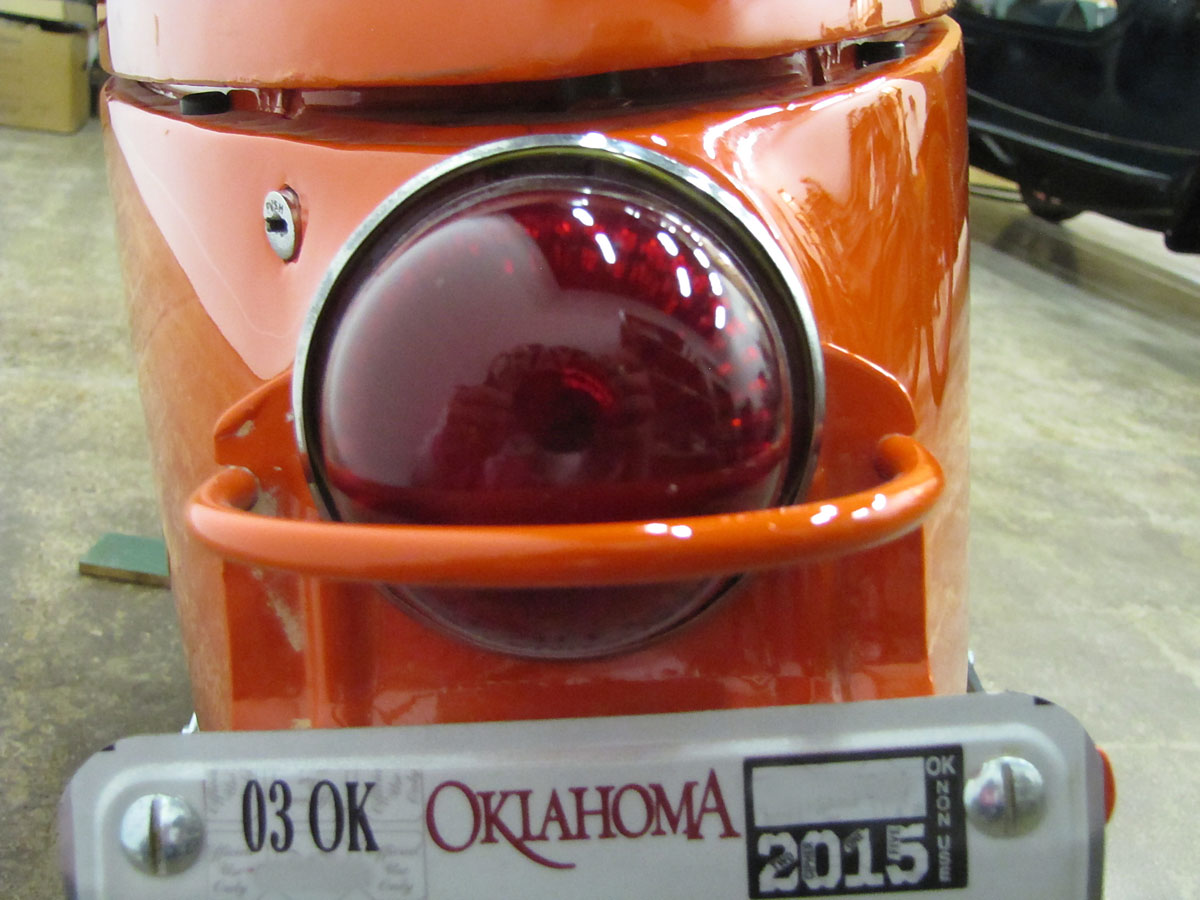
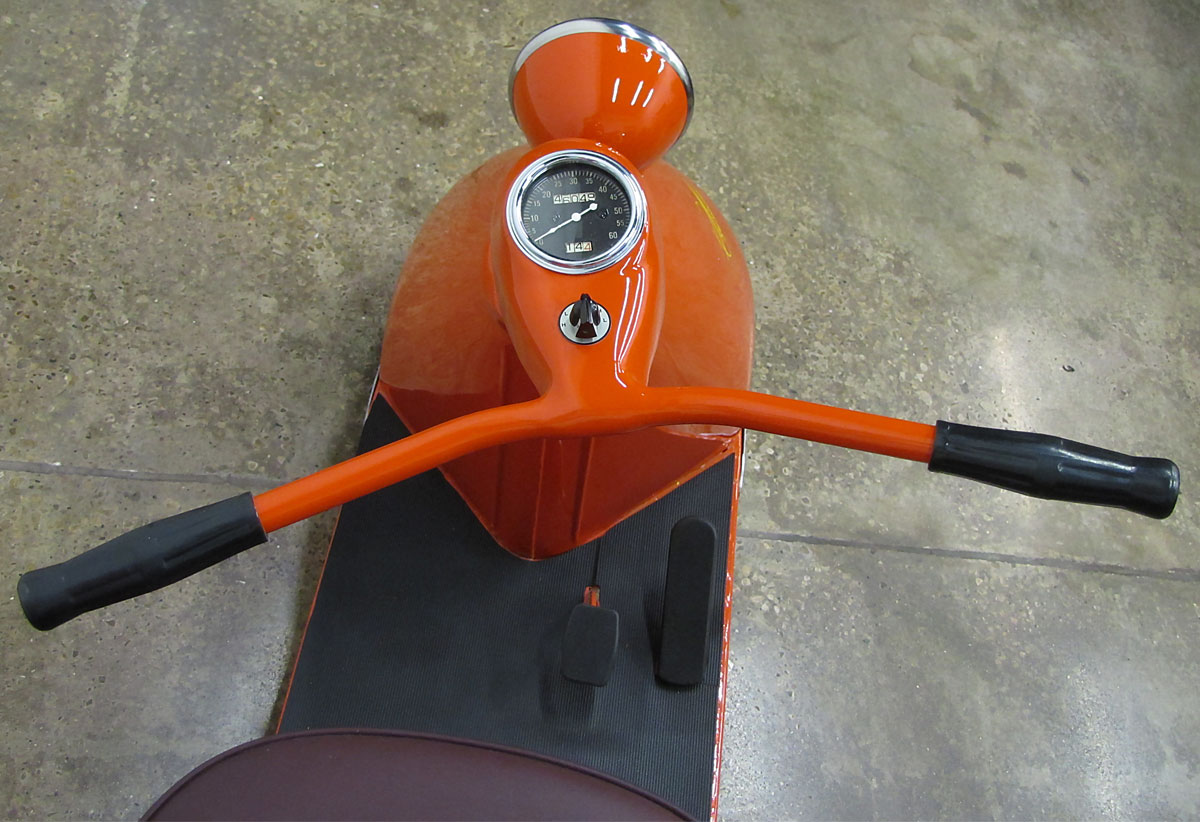
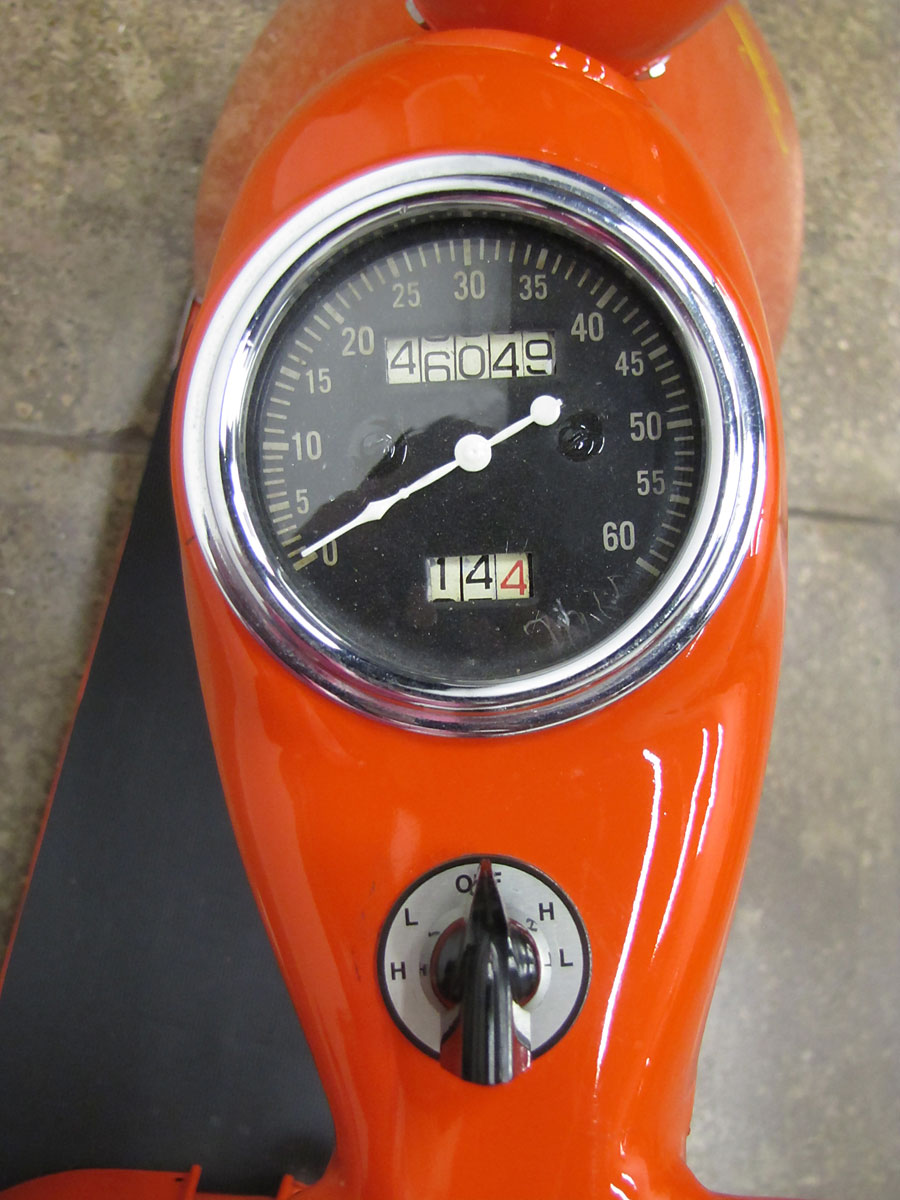
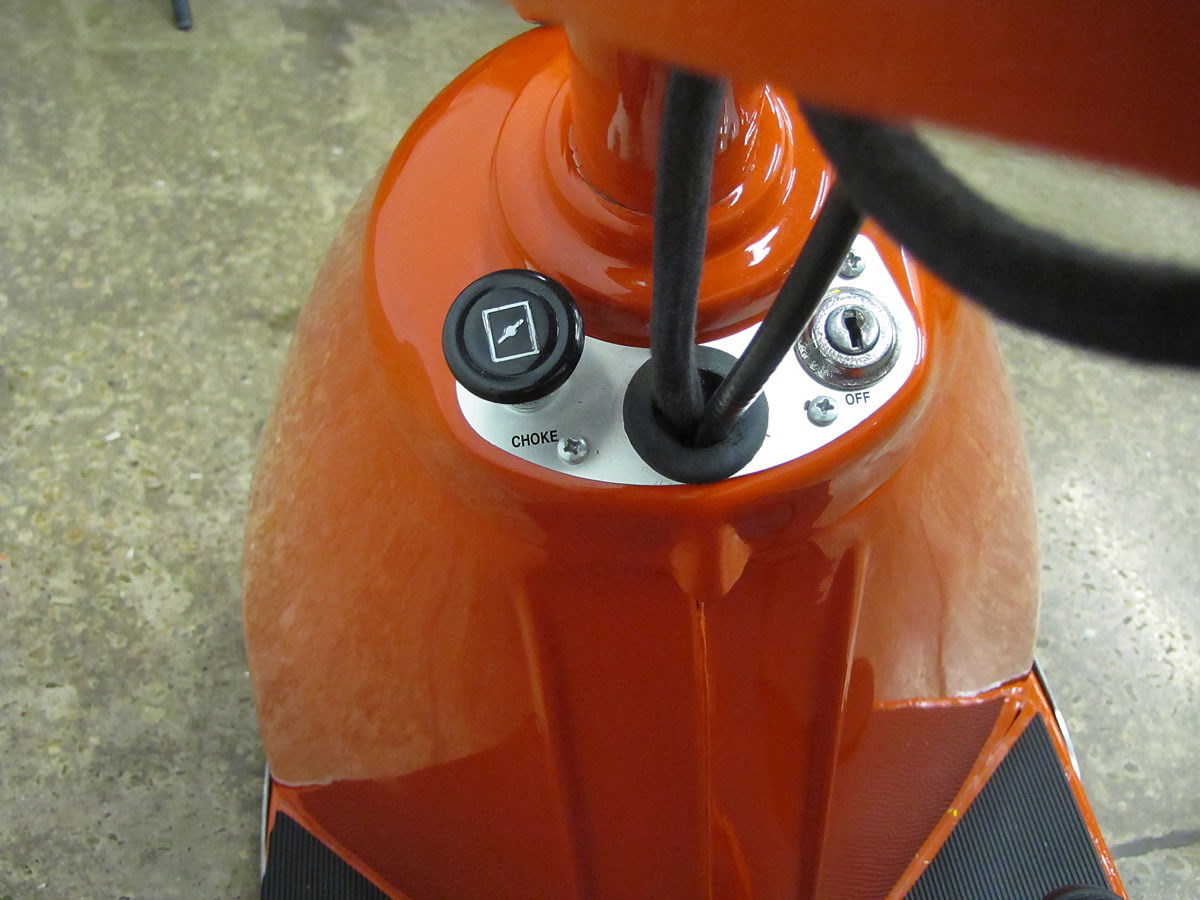
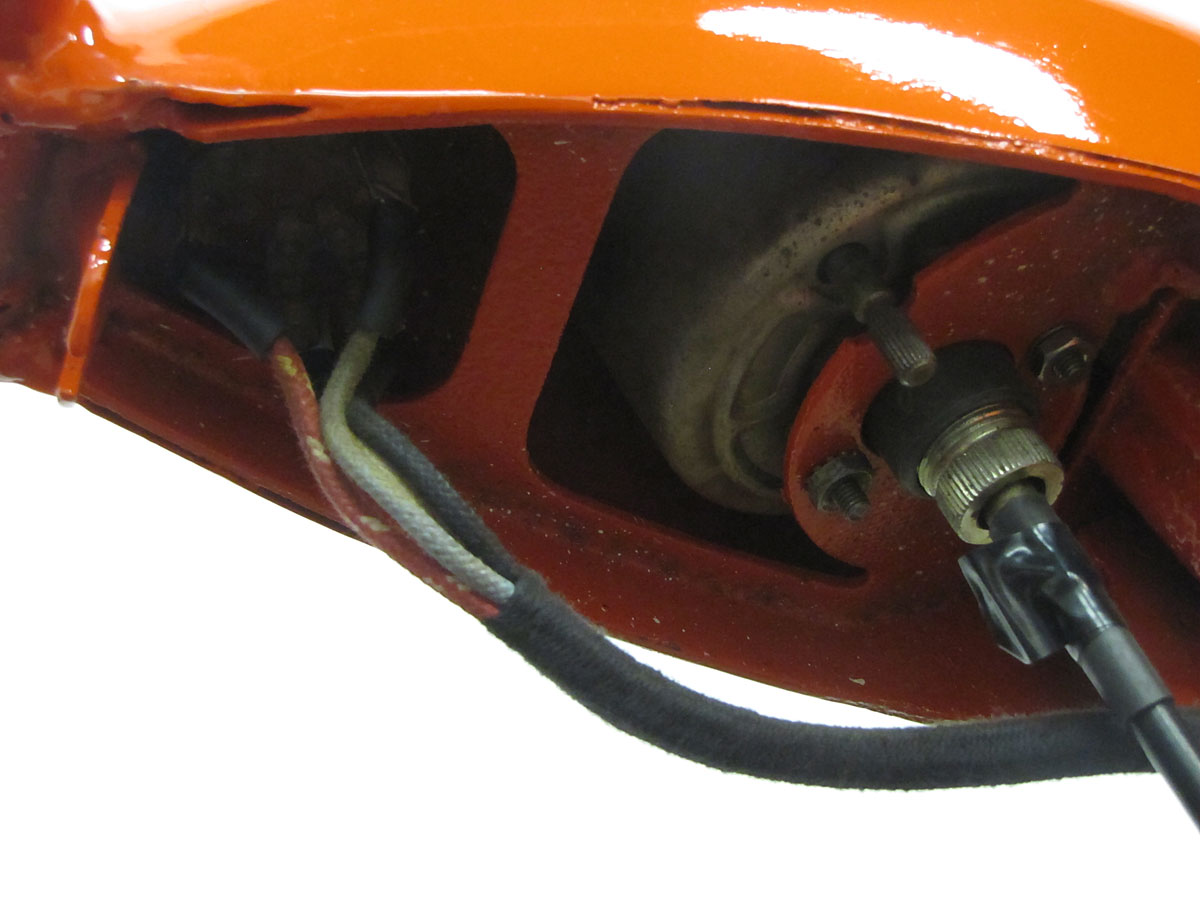
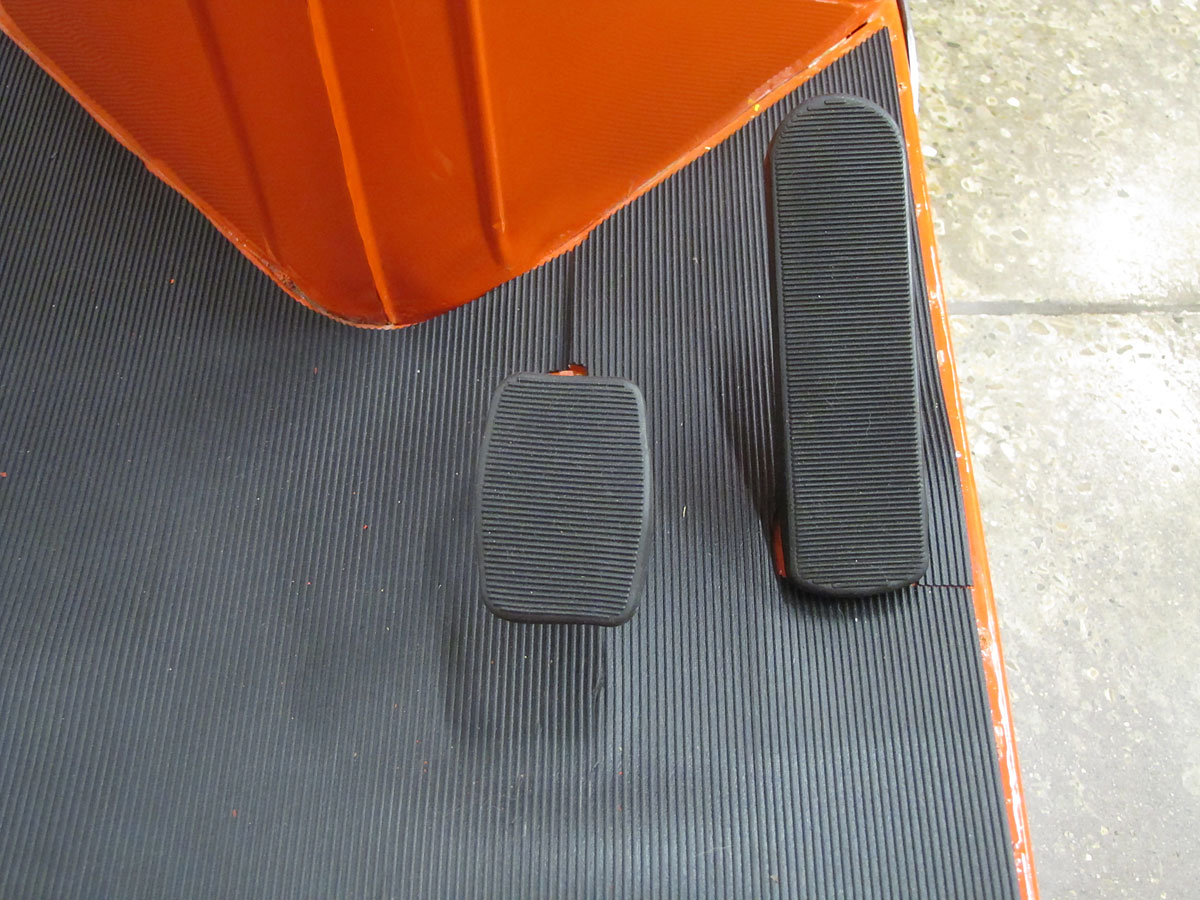
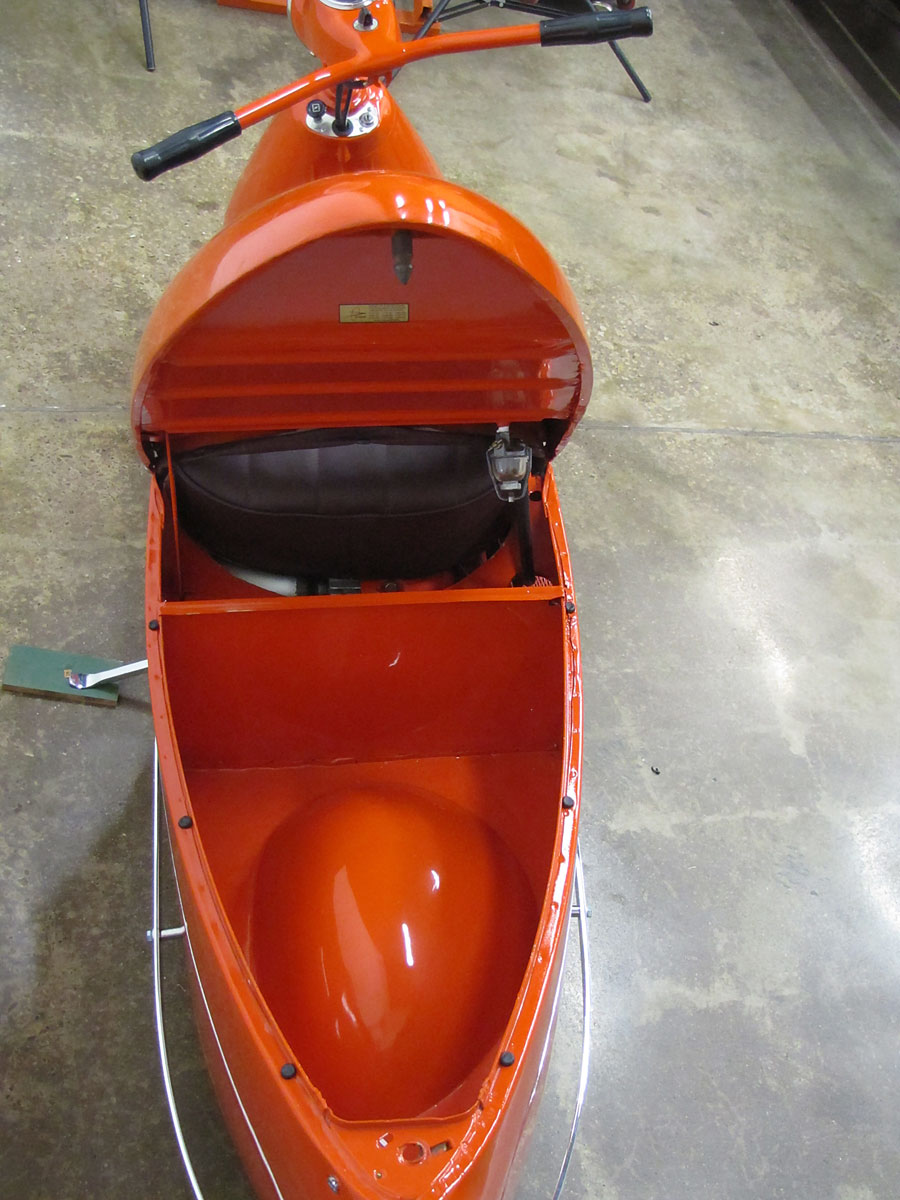
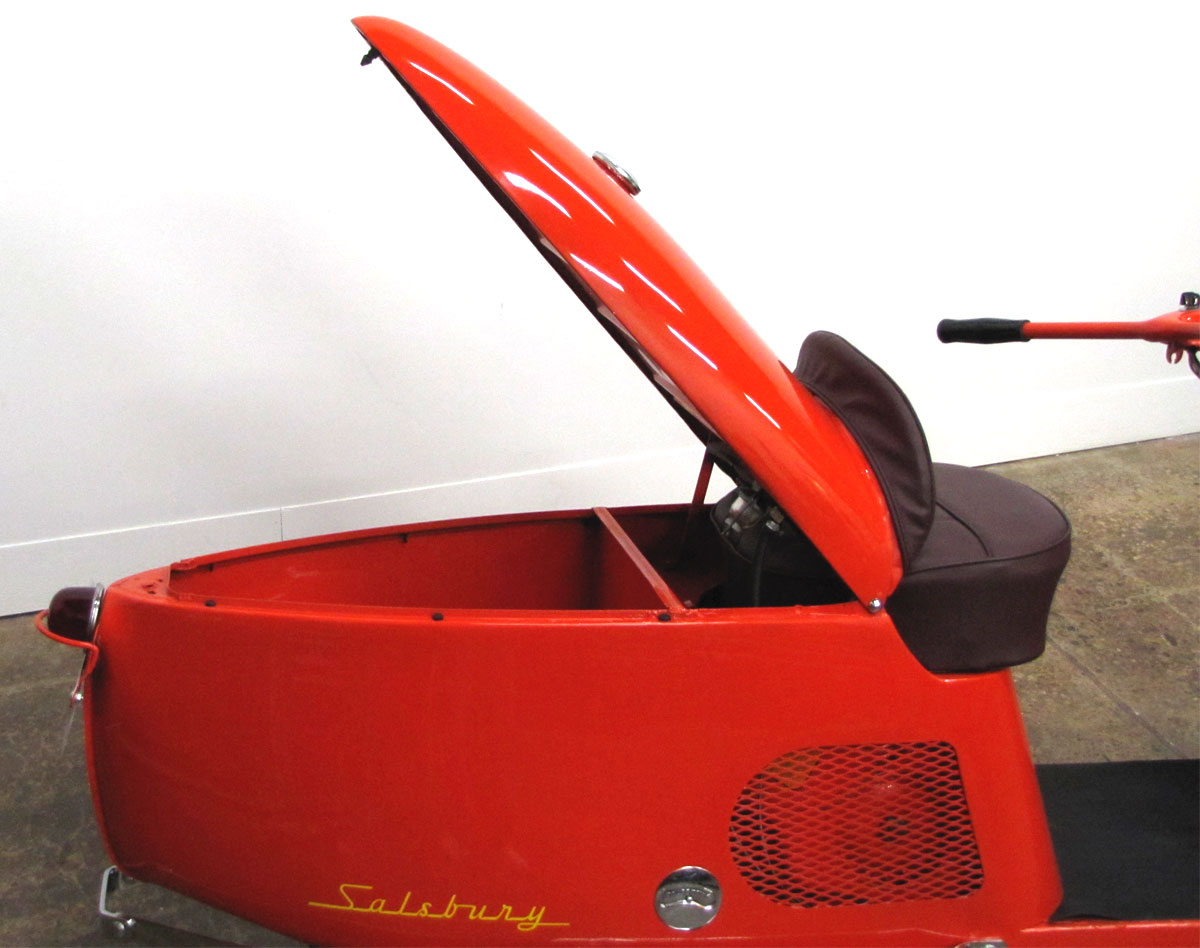
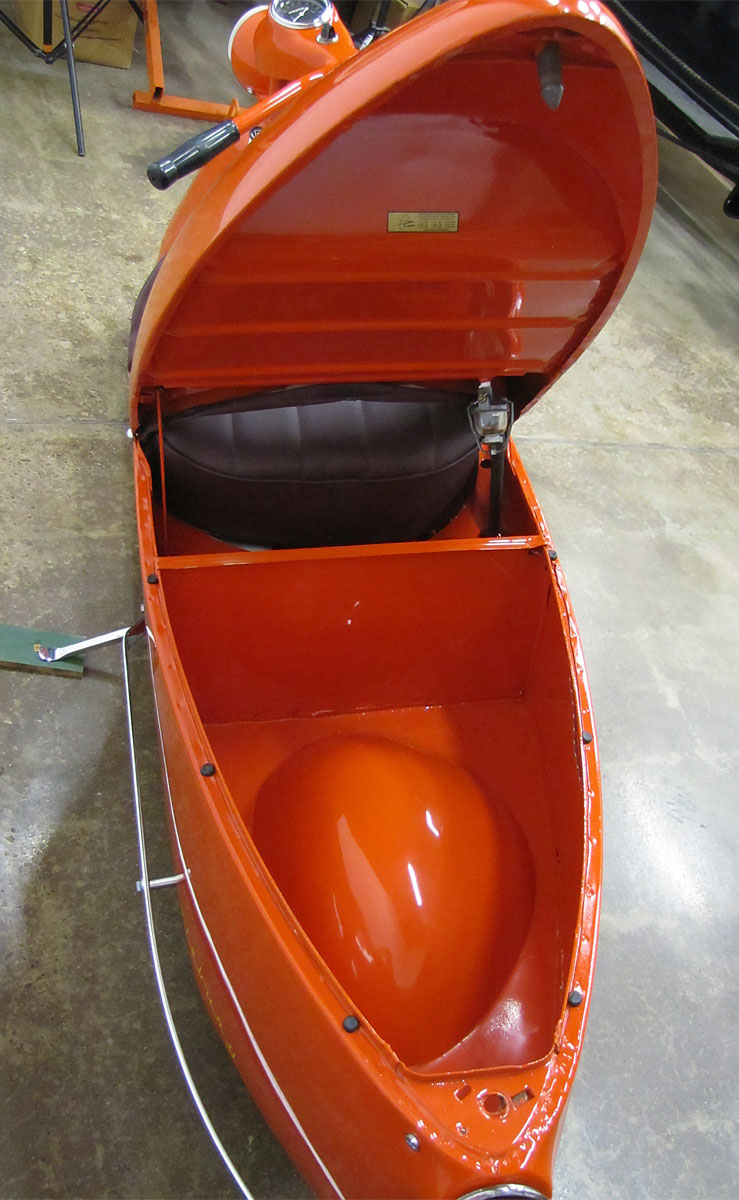
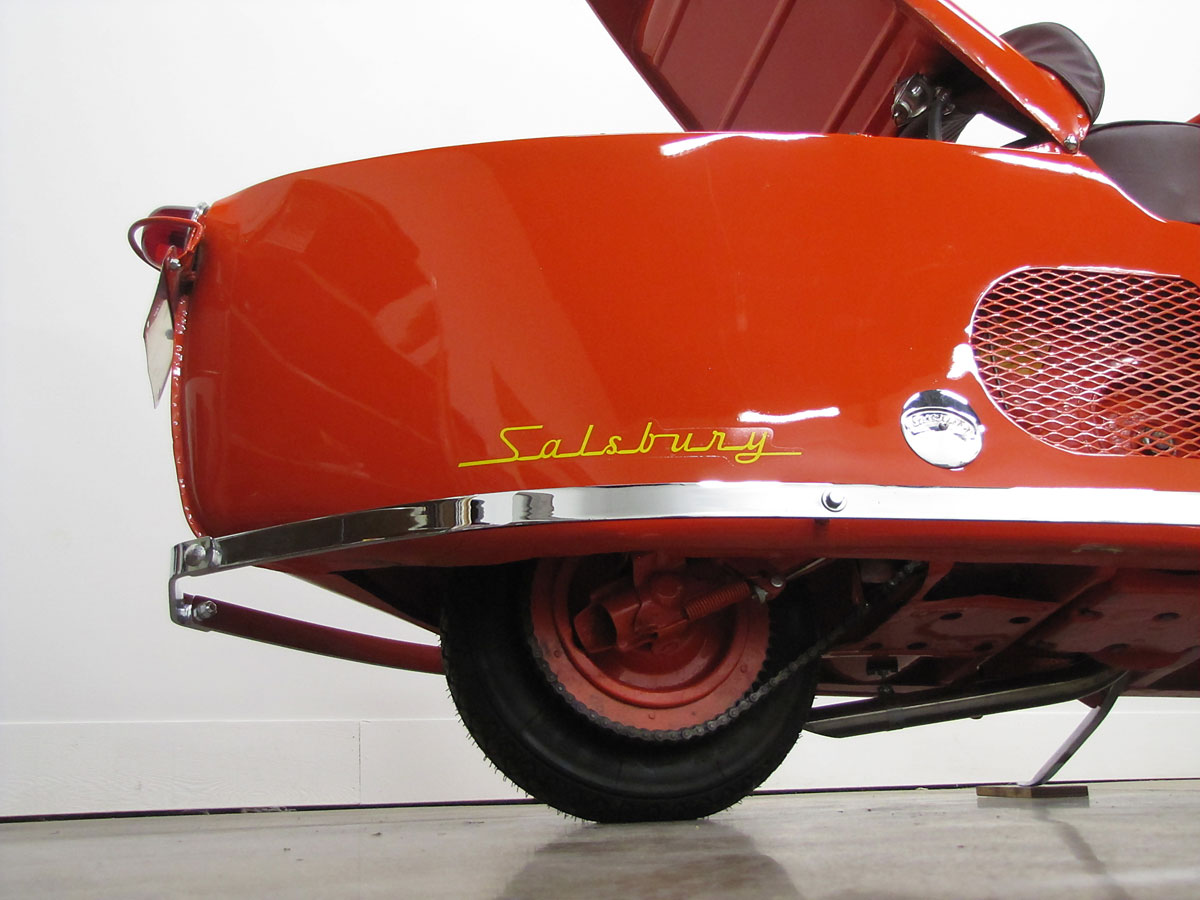
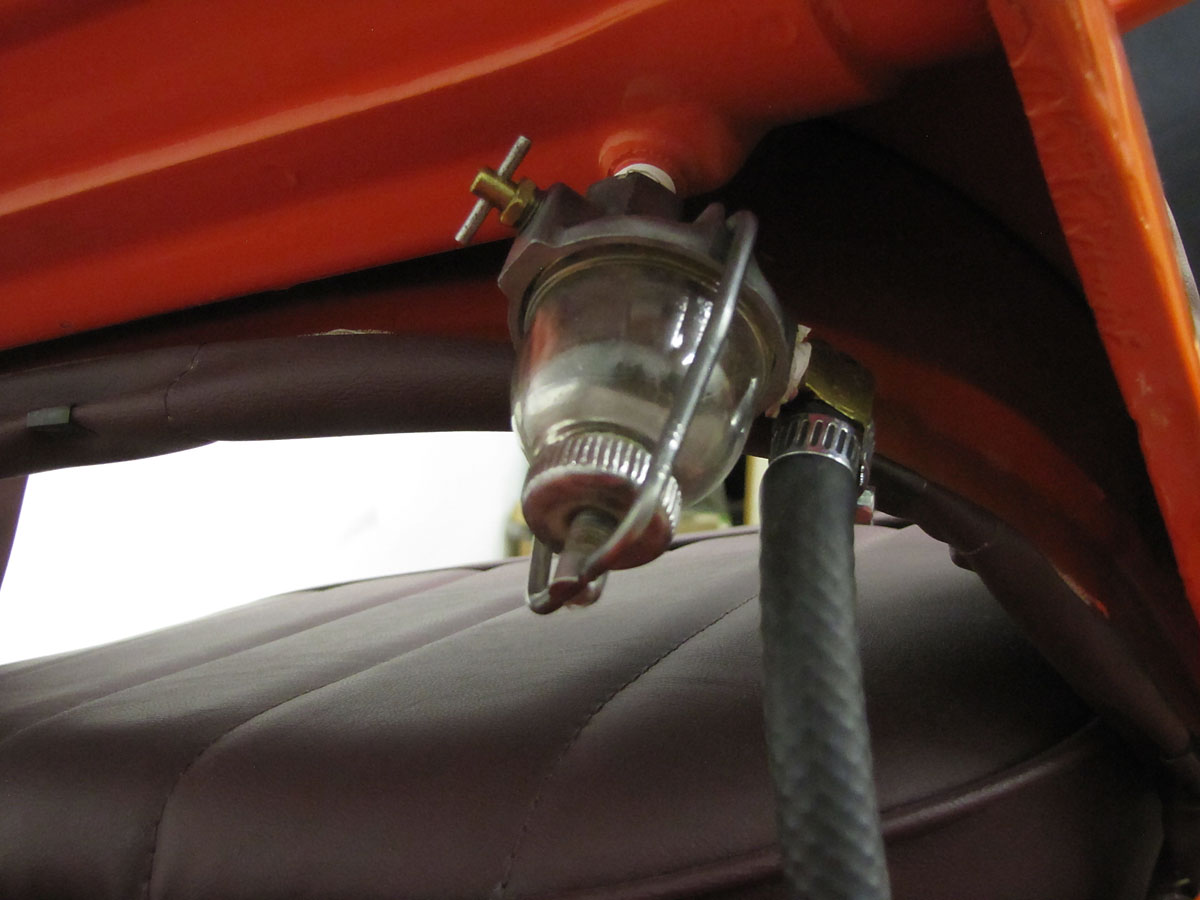
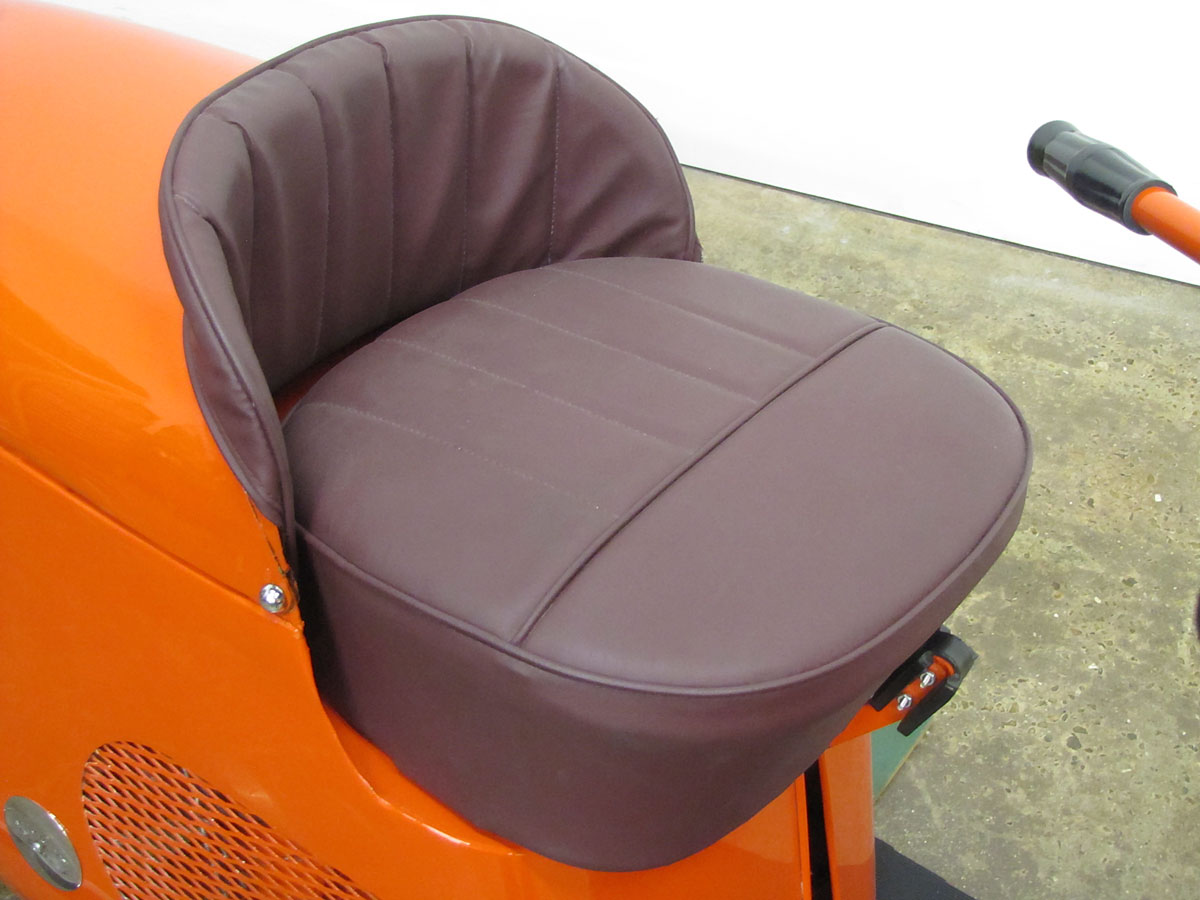
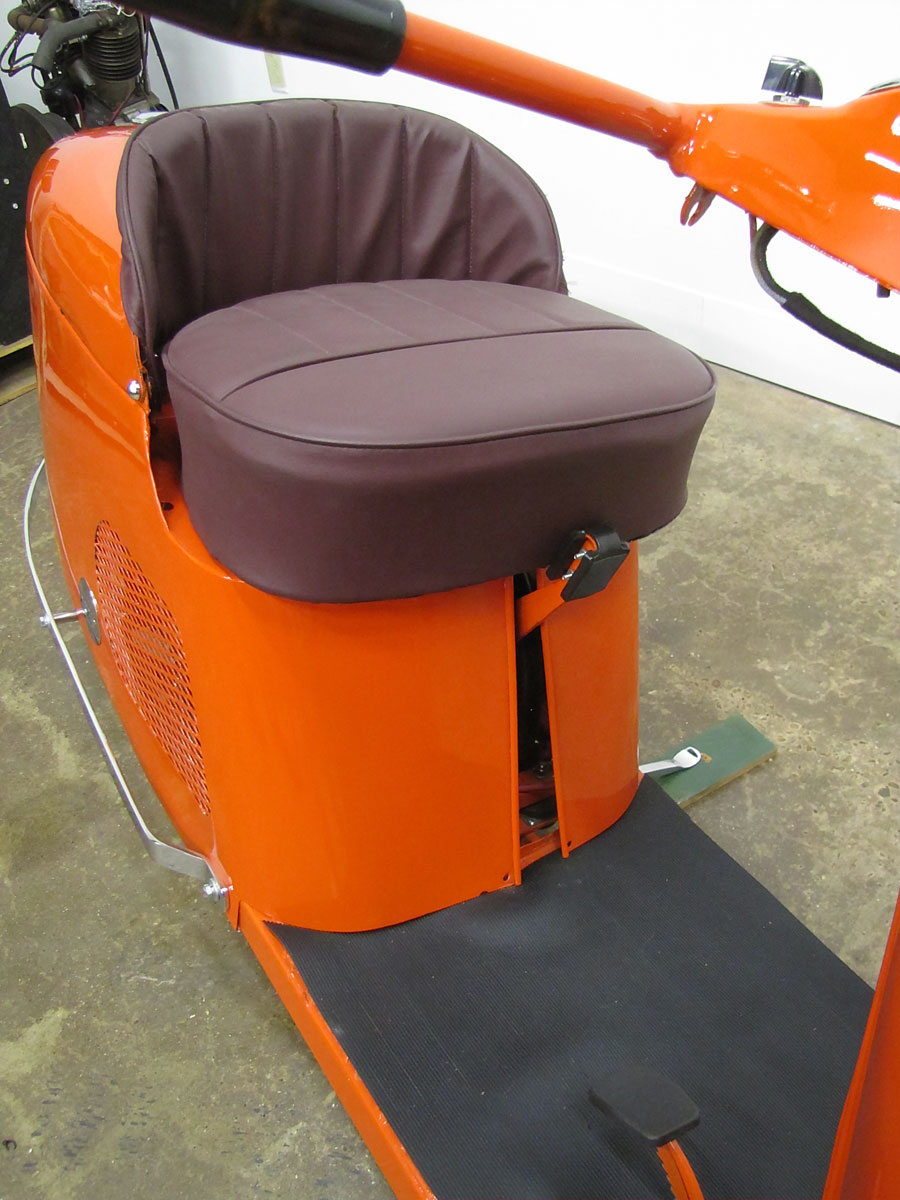
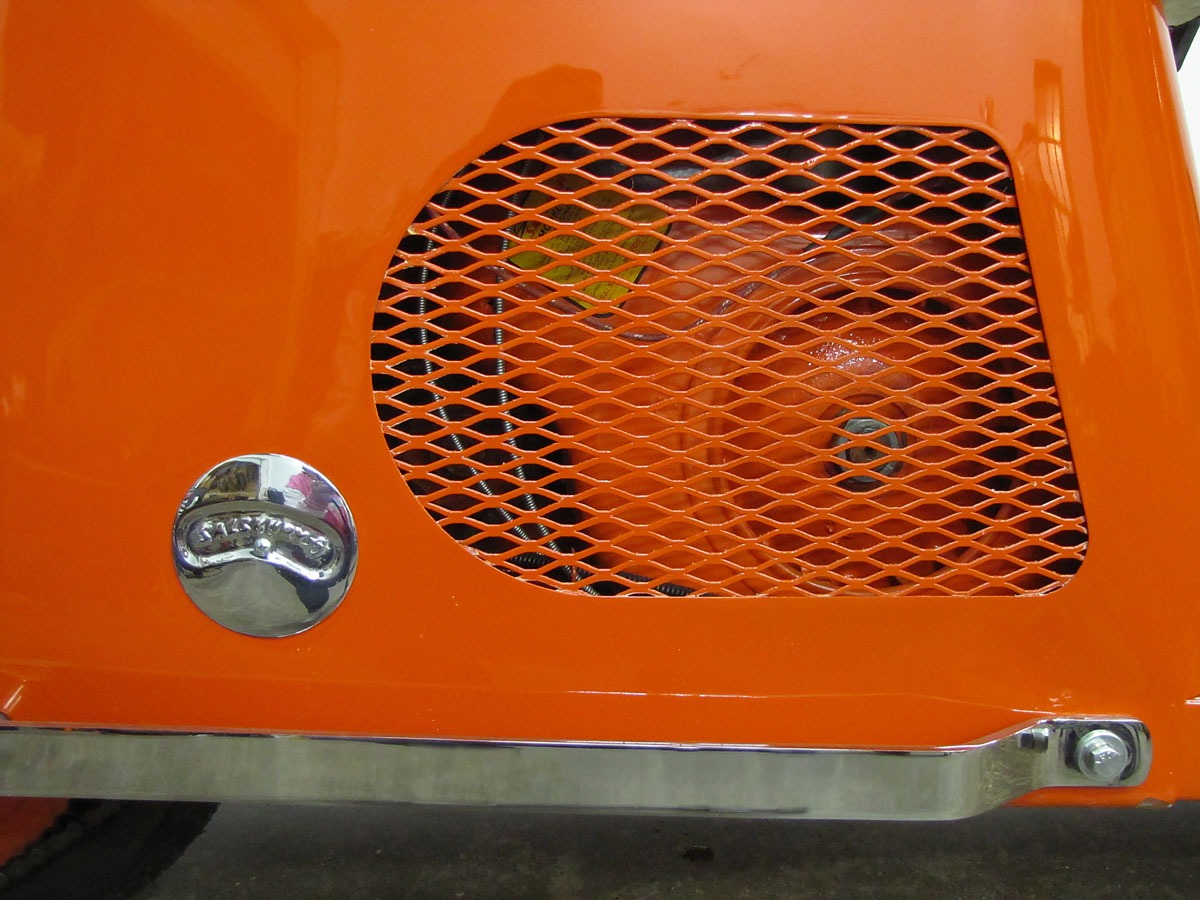
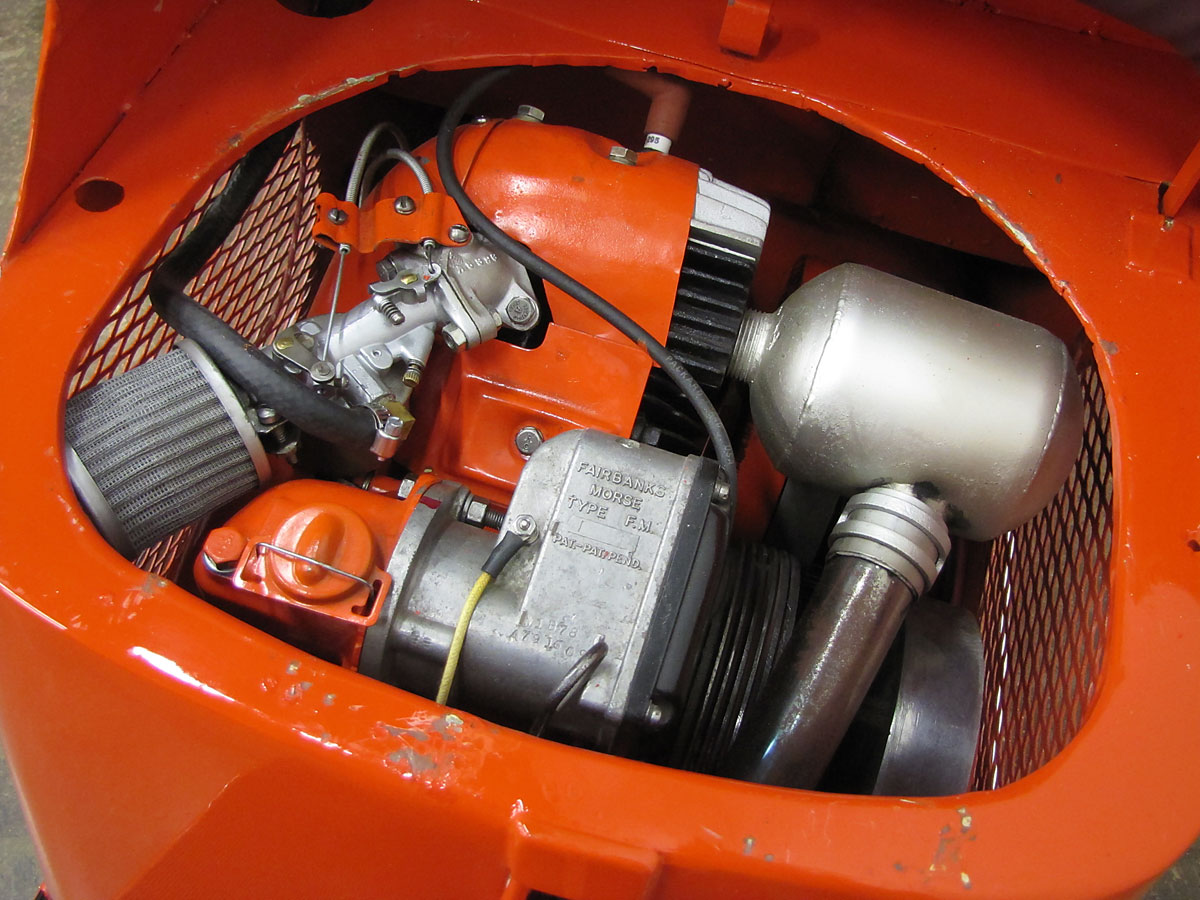
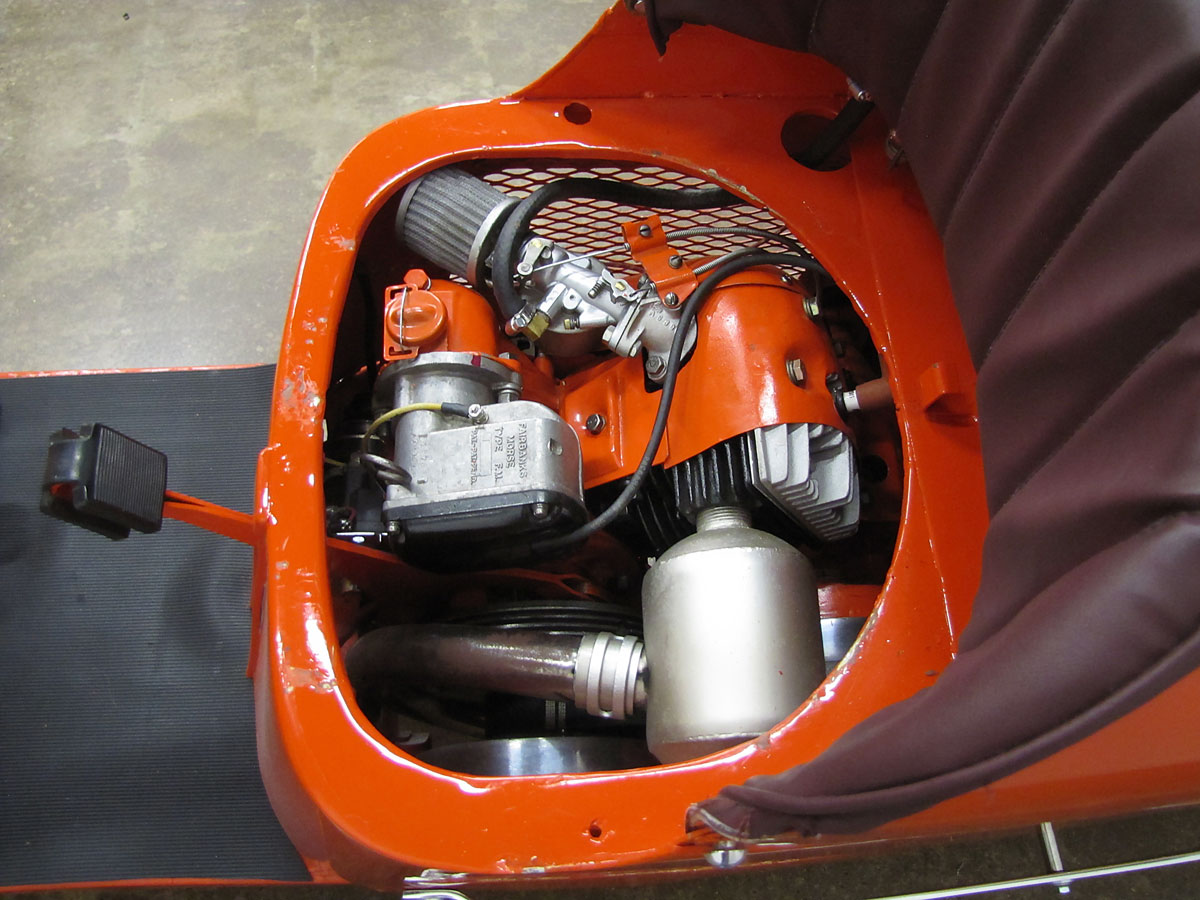
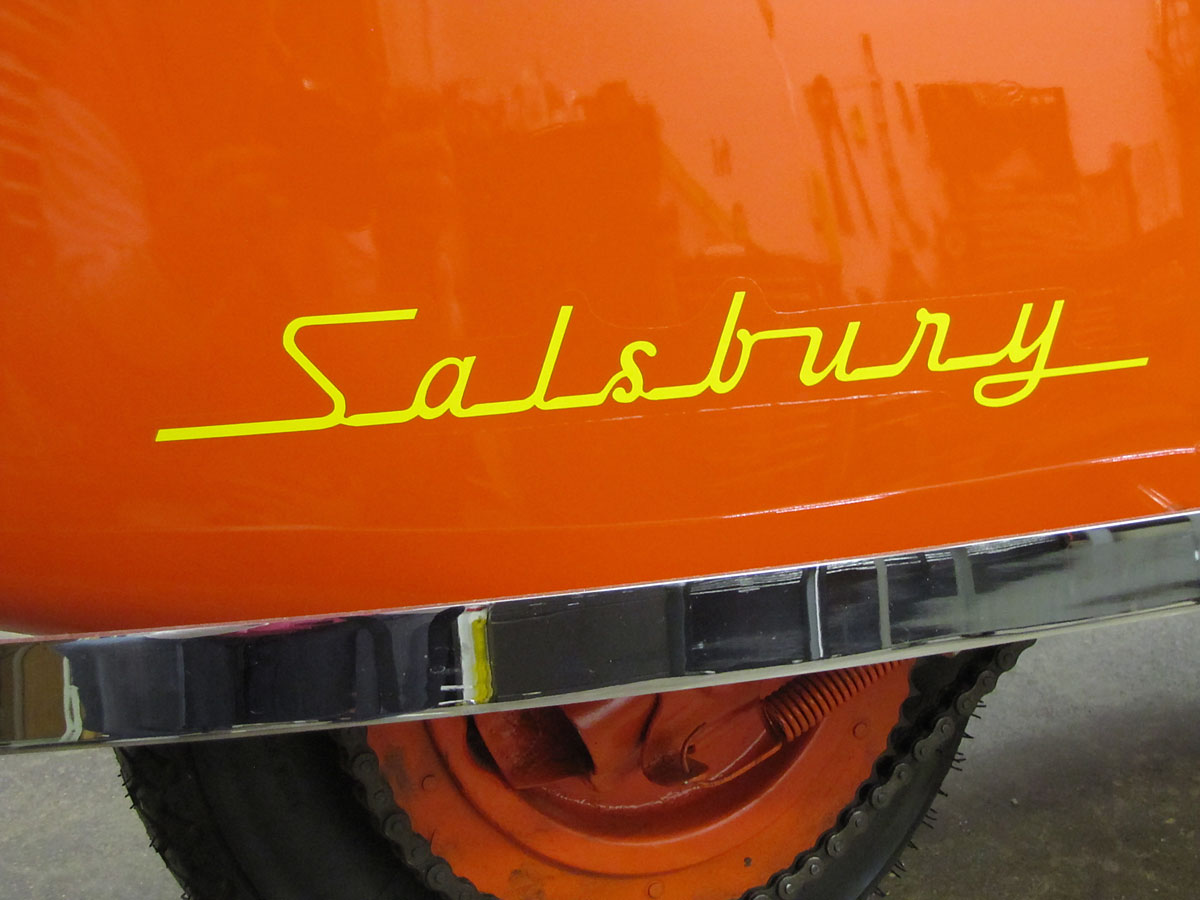
This Salsbury motor scooter is way too cool. I would like to have one of these for around town travel. As a teenager in the late 50’s I had a Sears Allstate motor scooter. It was powered by a 3 hp continental engine. It would only do about 25 MPH, and then my buddies and I figured out how to make it go faster. We removed the governor and then I could almost keep up with them on their Vespa’s. I delivered many newspapers from the seat of that Allstate. I also went on many road trips and camping trips with my buddies. I would frequently ride it 30 miles to my grandparents house for a short visit with my grandmother. She would fix me a root beer or Dr. Pepper float, then I would be off again home. I always carried a quart of oil with me. That little continental held less than a quart of oil. It didn’t leak oil but burned it. Several times it seized up on me, after a short cool down period and an oil fill-up it was ready to go again. I rebuilt that little engine several times in the driveway at home. I could install new rings and a rod bearing in about an hour and be ready to roll. I didn’t like it too much because it wasn’t a Vespa, but I sure had a lot fun adventures on it. What I really wanted was a Cushman Eagle, but price-wise that was way out of sight. The Allstate served me well and gave me the freedom most Junior High and High School kids could only dream about. Ah, just typing in this little tidbit from a far corner of my memory brings back a rush of good feelings.
We have a 1947 Salsbury Imperial 85, with a Sidecar – excellent condition. If you are interested, please contact me and I will show pictures, etc. Side car looks like factory installed to me…
just saying.
Do you still have the Salsbury?
Yes I do
If you still have that Salsbury with sidecar I wouild be interested in purchasing it. Please let me know.
I want bro
Looking to buy if You are interested in selling
This is on loan to the Museum – and it is not for sale.
Please provide the tire size used on 1947 Salsbury Model 85 scooters?
Thank you,
Howard
Cell: 619-980-4586
I’d be interested in pictures of your Salisbury with a sidecar.
Dataphoneman2002@gmail.com
My first motor vehicle was the Salsbury around 1949-50. I rode it for 2-3 years before my first car, and my longest trip was from San Marcos to Rockport, Texas, when I was 14-15. Top speed 35 mph (I would have liked to have that 50 mph speed it advertised). My hands had no feeling in them for a couple of days from the vibration of the handlebars after the 163-mile ride each way. I had to get a Texas driver’s license to ride it.
My scooter was the only Salsbury I ever saw, and I had a lot of fun with it riding around and taking my friends on the hood behind me to get a drink at the drug store. It also helped me get ready for automobiles, except it didn’t have that clutch pedal I needed for all my early autos. I’m proud to have a picture of myself sitting on my new Salsbury along with my little sister and brother with their new bicycles.
The Model T ride at Knotts Berry farm in Buena Park California used the “salisberry” belt drive, they were designed by Loren Beckman whom I worked for in 1966-1968
I want this bike
My schoolboy transportation was of coarse a bicycle. Going home from school I had to push it part way up Olive Avenue in Burbank, California, because the slope was too steep for me to pump the pedals up the hill. I got a New Departure two-speed hub and installed it in the rear wheel hub. It had a little shift lever I secured to the frame ahead of the seat and aft of the handle bar. There was a cable adjustment just aft of the lever. When adjusted for standard riding in high or low gear it was just fine. However, pumping up Olive Avenue it would pop out of low. Had to change cable adjustment to stay more securely in low. Then, while in junior high my dad gave me a Doodle Bug from Western Auto Supply from the store that once existed on San Fernando Road in Burbank. The governor capped top speed at about 18 mph. From sheet metal dad and I build a little cargo bin that we screwed onto the frame in back to carry my school books. That soon gave way to a Salsbury motor scooter in about 1948. It had a windshield, buddy seat in back and a rear brake. A front brake could be purchased from Frankson Scooter Mart in Glendale, California, where the scooter came
from. Frankson sponsored scooter rides to various destinations. Victor, my high school buddy, has a Cushman scooter. On a ride into the local mountains Victor’s scooter wouldn’t climb some of the grades. I would come up slowly behind him and with my strong bumper would push him up the hill. My scooter had a Tecumseh 4-stroke engine with magneto ignition. It never burned oil. My recollection is that the scooter was by Wynn, a company that made pumps for gas stations and also street sweepers. Mine was cream colored but otherwise looked like the red one pictured above with one exception. Mine didn’t have the fuel filter shown attached to the gas tank outlet. Mine really needed a filter as rust flakes would stop flow of gas and I would have to deal with it. With the wonderful scooter I delivered the Burbank Review to subscribers in the Verdugo Hills. It would easily go 55 mph. I should have kept it after eventually getting a 1946 Nash Ambassador Club Coup.
I AM L474OOKING FOR INFORMATION ON THE TIRE DIMENSIONS AND HEIGHT FOR A 1947 SALSBURY MODEL 85.
After 40 years of bitching, letter writing and ferocious email exchange, the automotive industry has finally started to wake up to the CVT. Sadly, I had nothing to do with their breakthrough, but at least the idea is getting some notice. The CVT could have been used from the git go in the tiny Japanese and EuroCrud cars that began to show up in the 60s. It would have dramatically boosted their performance and with a savings in gas mileage. Hmmm… On second thought it might have been a good thing they ignored it. If they had implemented the CVT they would have even more dominated the automotive market. I guess its a good thing that nobody listens to me.
I first experienced the thrill of a CVT on a 1948 Salisbury, scooter. It could leave any hopped up Harley in a cloud of dust (well, for at least a block) using less than 10 HP . The first models had only 6 HP but that got boosted to 12 in the later years. The awesome thing is that you ONLY NEED 10 HP to smoke the competition The standing start ratio was probably 25 to one, and as the vehicle increased speed, that ratio changed smoothly to 1:25 for cruising. NO need for a case full of gears.
Admittedly, it might not have worked for the the 50s and 60 behemoths as it requires a belt drive. But a Datsun or Toyota would have been an ideal platform. You could have easily blown away most 57 Chevys for the first hundred yards or so.
How fast could it move out from a standing start? I have attached a picture of one of the first model. Note that the seat is cut into the body giving the rider a butt rest. if you choose to accelerate at full throttle, you CANNOT remain on the scooter by simply holding on to the handle bars . I was 15 and in my prime. My friend who owned the Salisbury warned me about the extreme g forces, I thought he was exaggerating. On my first outing, it threw me off the back of the scooter. It jumped out (without me), fell over and scratched the side of the body. He was not amused, and I had bruises that lasted for two weeks.
As a sidebar, I once went to see Kenny Casteel in Boise at the Firebird 1/4 mile dragstrip. While there, I watched snowmobiles racking up consistent 8 second times. I was perplexed. I had worked for years to get my car into the 9s – a spectacular feat for a full-bodied sedan. And these goombahs were acting like it was no big deal. I started listening carefully as the mobiles went down the track. Then it hit me! There was no perceptible change in rpm throughout the 1/4 mile.
I instantly knew what they were doing, I chased down an owner and grilled him. It was as just as I had guessed. All the “snowies” were built by the manufacturers with CVT transmissions. Once the vehicle gets underway, the CVT keeps the engine at its maximum torque output RPM throughout the run.
Here’s the article
Go here:
https://www.yahoo.com/autos/cvt-vs-automatic-transmission-difference-191940682.html
Dick Walker